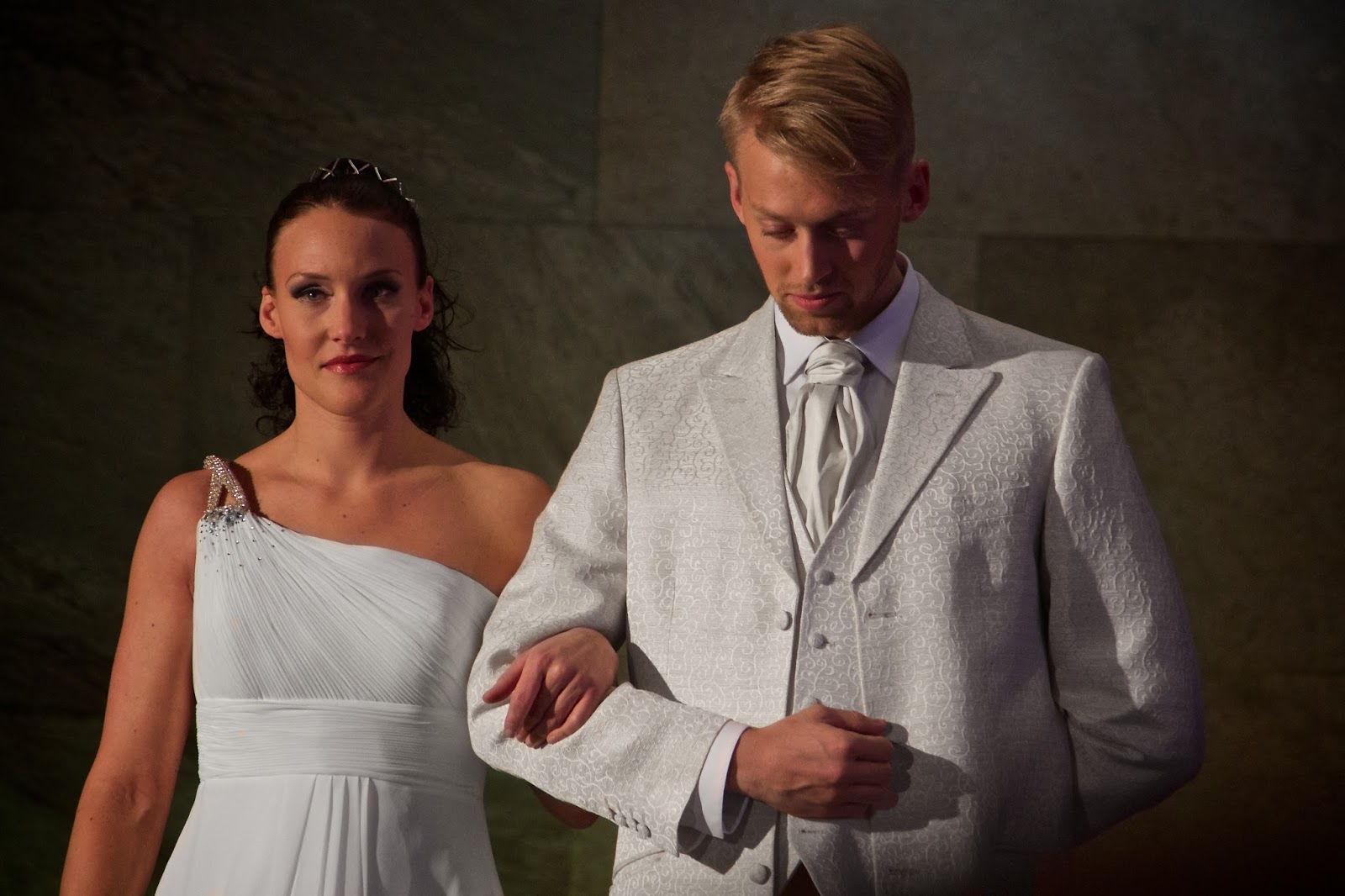 |
| This is what the original photo looks like without color correction. I prefer this version, but I am probably the only one on the planet that does. |
At a convention, you have no control over the light. That is pretty ok, because it leaves me free to focus on the moments that matter. In that respect, wedding photography (, wedding convention photography really, but the same idea applies), is like street photography: It is about capturing the moments that matter.
Then again, when you get back home and look through the photos, the little matter of color correction crops up.
The main lighting at the convention was quite yellow in color. The background lights where mostly green. This created an underwater feeling to the show. Not in a bad way. I liked it. A bit like a wedding in the halls of Poseidon.
 |
| The Poseidon statue outside the convention hall at Götaplatsen in Gothenburg. It may, or may not, have inspired the lighting scheme inside. |
The lighting made the white clothes look quite yellowish, but it made the people look good. If I color correct and make the gowns white, the models will also look quite pale.
Now, if I color correct an entire photo in one go, I might get something like this (Click on the photo if you want a larger version):
 |
| Left: Uncorrected; Center: Quick white balance correction; Right: Levels adjustment |
The leftmost photo is uncorrected, it's there just so you can compare the different versions side-by-side.
If you feel the need to color correct, which may be because you feel the need to have a happy client, or just to get paid, you have several options:
One option is to just change the white balance. In Aperture, you select Natural Gray in the White Balance adjustment, and click something that should be white or gray in the photo. A wedding dress is usually the right color, if you are shooting a wedding in Western Europe or the USA.
Take care to click an area that is not fully white. If you click a completely white area, the software algorithm won't know if the area is white because it was white in reality, or because it is overexposed. results may be more interesting than you want.
Another option is to use a Levels correction on the red, green and blue color channels separately. That provides a bit more control. That is what I did in the rightmost of the three versions above.
But wait, there is more: So far we have corrected the entire photo in one go. What if we want to treat some parts, let's say the clothes, different from the skin?
 |
| The wedding gown, the jacket, and the rest of the image have been treated separately. |
I chose a saturation brush and used it to paint the wedding gown. Then, I created a separate Saturation adjustment, and painted the jacket. This allowed me to make her white dress just a tad more white than his white jacket.
However, the people who arranged the show went through a lot of trouble to put up green lights in the background, and warm yellow lights in the foreground, so the dresses looked anything but white during the show.
For a client, I would offer both color corrected and original versions, but since this blog is mostly about what I like, I have gone for the warmer colors. I like the underwater feeling. It's probably just because I know about the Poseidon statue outside, but still...
Here are some more photos from the show. No color correction, just the way it looked when I was there:
 |
| This photo is so green you almost get an underwater feeling. Imagine marrying in an underwater dome at a coral reef. Above your heads sharks are swimming, smaller fish are looking in... |



















